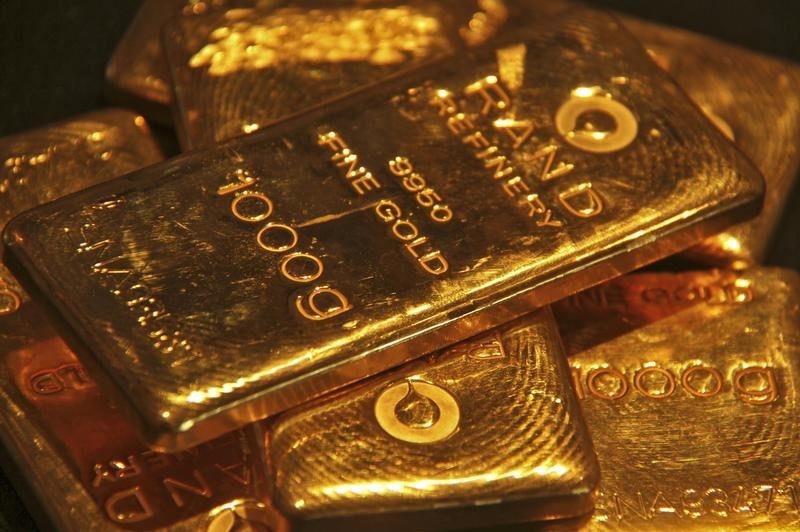Investing.com-- Gold prices fell slightly in Asian trade on Friday, staying largely rangebound as traders remained biased towards the dollar ahead of key inflation data that is likely to factor into interest rates.
The yellow metal recovered some ground on Thursday after falling below a $2,300 an ounce support earlier this week. But it remained stuck in a tight trading range around that level.
Spot gold fell 0.3% to $2,320.39 an ounce, while gold futures expiring in August fell 0.3% to $2,330.85 an ounce. Spot prices were also down for June, although they were set for some gains through the second quarter.
Gold rangebound ahead of PCE inflation data
The yellow metal had stuck to a tight trading range through most of June, amid growing uncertainty over the path of U.S. interest rates. While some data showed the U.S. economy was cooling, Federal Reserve officials warned that sticky inflation was likely to delay any plans to cut interest rates.
To this end, focus was squarely on PCE price index data on Friday. The reading is the Fed’s preferred inflation gauge, and is expected to show inflation remaining well above the central bank’s 2% annual target.
High interest rates bode poorly for metal markets, given that they increase the opportunity cost of investing in non-yielding assets.
Other precious metals were also rangebound on Friday, but were sitting on some gains through the second quarter.
Platinum futures rose 0.6% to $1,010.05 an ounce, while silver futures rose 0.2% to $29.328 an ounce.
Expectations of interest rate cuts spurred some gains in metal markets through the second quarter. But traders scaled back a bulk of these bets through June, which in turn saw most metals relinquish their quarterly gains.
Copper nurses June losses, China PMIs awaited
Among industrial metals, copper prices rose on Friday and were set for a negative end to June as sentiment over top importer China soured.
Benchmark copper futures on the London Metal Exchange rose 0.6% to $9,576.50 a tonne, while one-month copper futures rose 0.8% to $4.3695 a pound. But both contracts were down between 4% and 5.5% in June.
Losses in copper were driven chiefly by growing doubts over strong global demand, as economic conditions in major countries deteriorated. Top importer China also became a source of concern in the face of a potential trade war with the West.
Focus was now on upcoming purchasing managers index data from China, which is due over the weekend.
